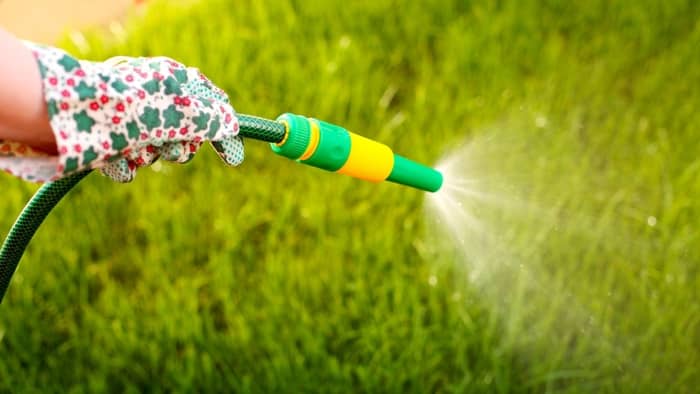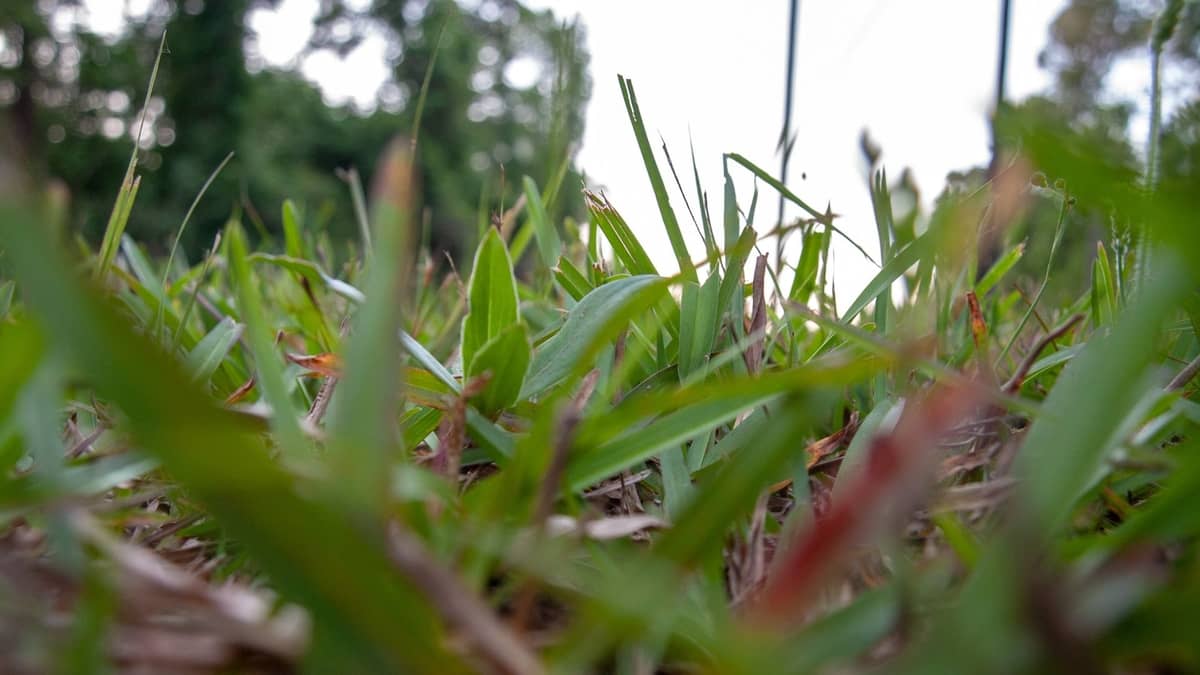In this guide, we will look at different ways how to get St Augustine grass to grow back again, after drying or dying.
St Augustine grass is one of the most common lawn grasses in Florida. It is very drought tolerant and is also medium maintenance. This grass is used in golf courses, residential areas, and even on the lawns of airports. It is also a very good choice for your garden or yard.
The main disadvantage of this grass is that it may not be as hardy as other varieties. It can be damaged by strong winds, frost, and heavy snowfall. St Augustine grass can also be very susceptible to diseases and insects.
St Augustine grass can grow up to 12 inches in height and can thrive in many soils. It is a warm-season grass and grows best when temperatures are between 15-35 degrees Celsius.
In this guide, we will look at different ways how to get St Augustine grass to grow back again, after drying.
Contents
How to Get St Augustine Grass to Grow Back
-
Remove dead stalks
After a while, dead stalks may start to appear. You can remove them with a pair of sharp garden shears. Make sure that you leave at least one stalk at the base of the plant. That way, it will continue to grow and your grass will stay healthy.
-
Use fertilizer
You can use a fertilizer that contains nitrogen and phosphorus. The best fertilizer for St Augustine grass is the “Green Lawn Fertilizer”. It has a low NPK ratio (5:3:3) and will provide a good amount of nitrogen and phosphorus for the plant to grow.
-
Water adequately
If you water it too much or too little, it may struggle to thrive. Keep the grass moist. It is very important to keep the grass wet. It will help the grass to grow and make it stronger.

Learn more about: How Long Does It Take Burnt Grass To Grow Back?
Caring for St Augustine When Growing Back
The grass is growing back, but there are certain things you should know about caring for the St Augustine grass as it grows back.
Keep it trimmed
Trimming is necessary to maintain good shape. It will make the grass look better and be healthier. It will also improve its appearance. You can use a pair of scissors or garden shears to trim it.
Make sure that it stays well-watered
Watering is essential for St Augustine grass. It is very important to water it regularly. A soil test is recommended before you start to water your lawn.
You can fertilize it
There are many different types of fertilizer available for St Augustine grass. You can use the “Green Lawn Fertilizer”, which contains nitrogen and phosphorus. It is recommended that you apply it once every eight weeks. You should not over-fertilize the grass.
Use a weed barrier
To prevent weeds from growing, you can use a weed barrier. It is recommended that you plant marigolds around the base of the plants. Marigolds are an effective weed barrier. You can use them to protect the new grass from weeds.
It is also recommended that you aerate it
Aeration helps the grass to grow more quickly. You can use a spade to dig up the grass. This will help it to absorb the nutrients in the soil more efficiently.
St Augustine Grass Varieties:
St Augustine grass varieties fall into two categories – high quality and lower quality.
Some of the high-quality varieties include the following:
Variety #1: Zoysia Aestiva
This is a popular choice for those looking for attractive grass with low maintenance requirements. It has a dark green color and grows to about 4 inches tall. It is ideal for use in hot climates and will grow well in low-light situations. Zoysia Aestiva grows best in USDA soil types 6 through 7.
Variety #2: Zoysia Australis
This grass is similar to the Zoysia Aestiva in appearance, but it has a slightly coarser texture and grows a little taller. It is ideal for use in cooler climates. It grows best in USDA soil types 1 through 3.
Variety #3: Stipa Averna
This is a hardy grass that grows well in USDA soil types 1 through 2. It is commonly used in warmer climates, where it can be grown as lawn grass. Stipa Averna can grow up to 2 feet tall and has a dark green color.
Variety #4: Stipa Gigantea
This is a popular choice for people who want a low-maintenance lawn. It has a dark green color and grows to about 5 inches tall. It is one of the few types of grass that can tolerate salt.
In Conclusion
When you want to create your beautiful landscape, look no further than to the St Augustine varieties. These varieties are ideal for areas like golf courses, tennis courts, or parks. They can be planted in full sun or partial shade. They require very little maintenance once established. They also come in different colors and shades so that you can easily coordinate them with other plants and landscaping elements.
Frequently Asked Questions
What Can I Put on my St. Augustine Grass to Make it Grow?
St. Augustine grass is a warm-season grass and will grow best in the height of summer; between May and September. You can use a variety of things on your lawn to make it grow faster and stronger. You may also want to add some fertilizer, or lime to encourage growth.
How Do I Make my St. Augustine Grass Thicker?
Providing your grass with enough fertilizer and water will help it to grow thicker.
How Do You Fill Bare Spots in St. Augustine Grass?
You can fill bare spots in this type of grass by replanting afresh in those patches that do not have any grass growing.
Where Does St Augustine Grass Grow Best?
St. Augustine grass is a warm-season grass and will grow best in areas that are warm and do not experience too cold winters.
A garden is a place that relaxes us and reflects our personal style, it’s a place to spend time with loved ones and grow our own fruits and vegetables. Maybe you’re looking for design inspiration or plant selection, or you’re concerned about garden privacy, shady areas, or pests, but don’t worry, you’ve come to the right place.
